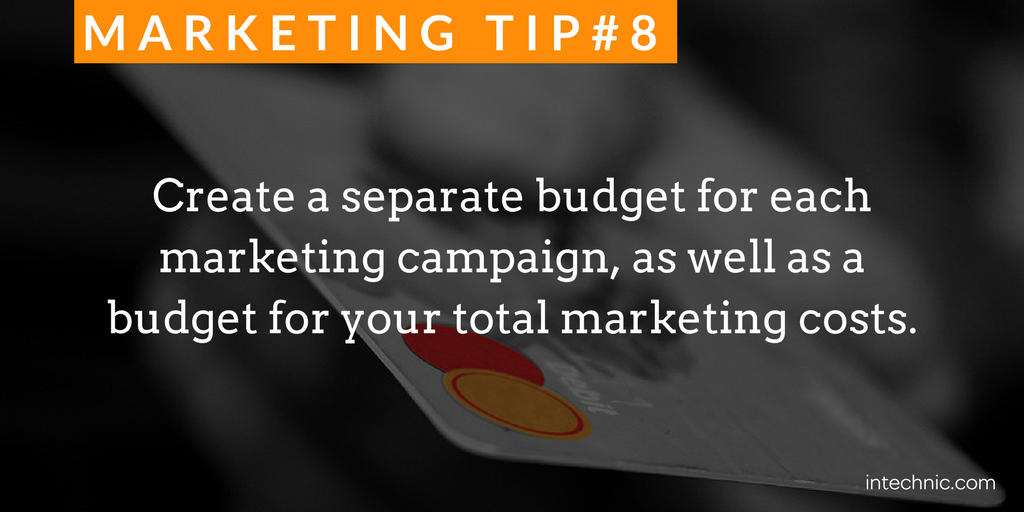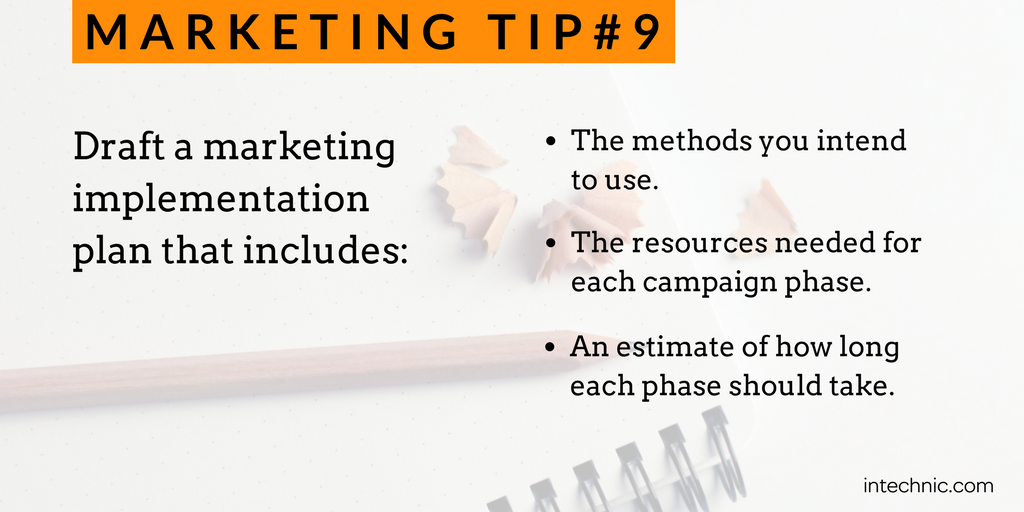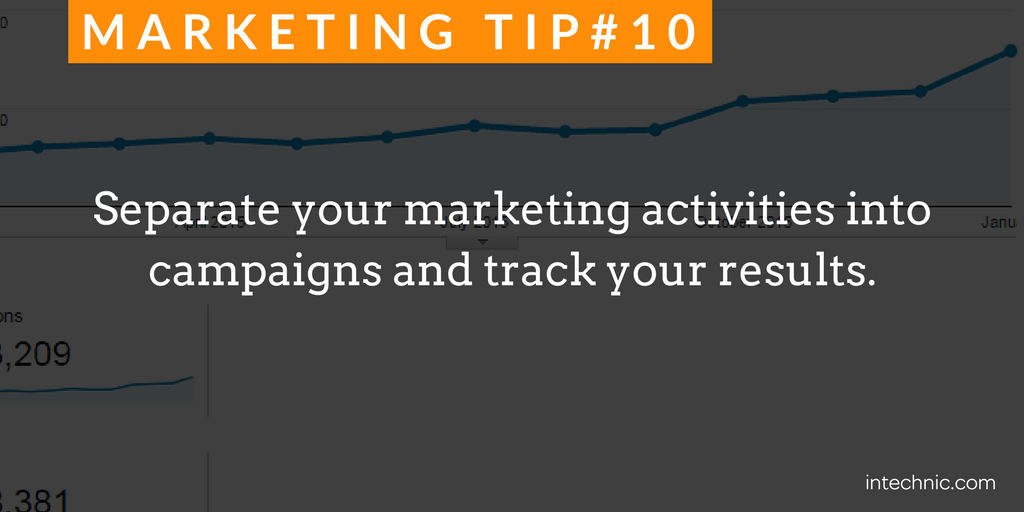 Continued from: How to Put Together a Marketing Plan for your Website – Part 1 In the previous article, I discussed the strategic planning that underpins your digital marketing plan. With the foundation for your plan set, I’ll show you how execute your marketing campaigns.
Continued from: How to Put Together a Marketing Plan for your Website – Part 1 In the previous article, I discussed the strategic planning that underpins your digital marketing plan. With the foundation for your plan set, I’ll show you how execute your marketing campaigns.
Step 6. Engage with Customer-Centric Marketing
In Improve Website Conversions through Customer-Centric Copy, I covered the importance of designing a customer-centric website. Your approach to marketing should be the same. Digital marketing is about generating quality traffic to your website by creating compelling reasons for visitors to come to your website. All of your marketing campaigns should be laser-focused on addressing the needs and solving the problems of your best customers. That’s why you need to interview your customers to understand what they want and need. The buyer personas and customer journey that support your marketing strategy should be based on your customer interviews. Don't make the mistake of becoming product-oriented—this is the opposite of being customer-centric. People just don't care about your company or your products or services. You have to explain what's in it for them. 
Step 7. Motivate Website Visitors to Act
The next step for creating a marketing plan is to compel visitors to act. No matter how great your marketing is, it will fail if you can't get people to act. To succeed, you must make people want to come to your website, and motivate them to act once they get there. One way to do this is with effective calls to action. I talked about best practices for calls to action on your website in 6 Tips for Creating Effective Calls to Action. You should use the same principles in your marketing: make visitors feel safe and comfortable, influence their behavior by creating a sense of urgency, but make the steps easy and risk-free. The best way to get people to act is by reinforcing their perceptions and experiences. You have to show that with every step they advance toward the ultimate prize. The most successful websites start converting visitors into customers well before people even arrive on the websites by creating an experience and telling a story—beginning with the first encounter and ending with the sale. Your marketing should be effective in bringing people to the site and converting them on the site. These are not separate processes. They are part of the same process. Your internal marketing (i.e., your marketing on the website) should be consistent with your external marketing (i.e., your outbound or inbound marketing). People don't differentiate. A message from your company is a message from your company, no matter where they see it. After all, if people believe they are moving in the right direction, that progress makes them feel great, and they will be more likely to convert. 

Step 8. Set Fixed Budgets and Caps
When planning your budget, there are two ways to proceed. One way is to start with a figure that is affordable for the initial marketing campaigns and then distribute budget dollars between campaigns. Alternatively, you can determine your tactics and price them out separately to see where the numbers fall in your total marketing budget. In either case, it is important that you have a separate budget for each campaign, as well as a total budget for all marketing costs. Budgeting individual campaigns will allow you to calculate ROI for each campaign and control campaign costs. Tracking your total marketing budget will allow you to focus on your total spend and prioritize when necessary. You can always adjust the distribution between campaigns when you determine if a set of tactics is effective or not. You want to retain this flexibility. Today it is very easy to spend your marketing dollars, and it is even easier to overspend. If you turn on an ad and neglect monitoring it, or worse, abandon it completely, the costs can mount quickly. Unmonitored ads can rapidly rack up thousands of dollars in unplanned expenses. To prevent this, always set caps on time (how long for the ad runs) and on expense (the maximum budget you are willing to spend). Most of your marketing activities will require an investment in some form. In addition to cash, your time is also costly, so you need to spend your marketing dollars wisely. 
Step 9. Determine the Implementation Specifics
A marketing plan is no good if it remains on paper. An important and necessary component of your plan is a concrete, realistic, step-by-step implementation strategy. This plan should include the methods you intend to use, the resources needed for each phase, and an estimate of how long each phase should take. A common marketing problem is that companies frequently overextend their resources. This is the case, especially with human capital. It doesn't matter if you have an entire marketing team or if you perform all marketing tasks. There are only 24 hours in a day, and you can’t devote all your hours exclusively to marketing. To ensure the scope of your marketing campaign is realistic, ask yourself the following questions:
- How many people do you need to implement the plan?
- What are the specific roles you need to staff? These should be based on your teams' strengths and levels of experience.
- Do you have the bandwidth to manage all these channels and campaigns?
- How many team members can you or your PM manage simultaneously?
- How much time will you need to allocate for learning new tools and channels?
- How much time will you need to allocate to measure results?
- Do you have the bandwidth to generate the necessary creative spaces (ads, landing pages, etc.)?
Set a realistic implementation plan based on the number of people involved, their availability and their strengths. I would also suggest padding your plan by approximately 20% to accommodate unforeseen marketing-related tasks and activities that will undoubtedly arise. 
Step 10. Frequently Analyze and Look for Ways to Improve
How do you know what works and what doesn't if you don't measure? We talked about it in How to Measure Your Website’s Performance: Best Metrics & KPIs. These principles apply to marketing as well. You should plan on running several tests in your marketing plan. These tests will reveal what works best so you can focus your marketing dollars on the most effective tactics. You must test the waters and select the marketing tactics that work for you. You will make mistakes along the way. There is no way around it, and you should anticipate and prepare for them. When you make a mistake, you have to learn from it. You must take quick action to fix a problem or improve a process, or you will pay a hefty price in time and money. Channel your resources toward effective revenue-building marketing strategies and avoid ones that don't deliver a return on your investment. To determine what works and what doesn't, separate your marketing activities into campaigns. You can then set up and track your marketing campaigns with Google Analytics to track their effectiveness in real time. Schedule time in your calendar to check your KPIs regularly. Your marketing dollars are like soldiers. When you send them to war, you want them to come back victorious. Count your wins and losses daily. Look for ways to send out fewer soldiers and achieve more successes. That's what effective marketing is all about.  And that's it! Once you write out outlines that address these issues, you'll have completed a marketing plan worthy of your business. For more tips on running a successful marketing campaign, check out the free eBook below:
And that's it! Once you write out outlines that address these issues, you'll have completed a marketing plan worthy of your business. For more tips on running a successful marketing campaign, check out the free eBook below: 


